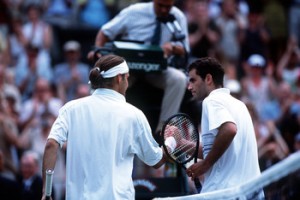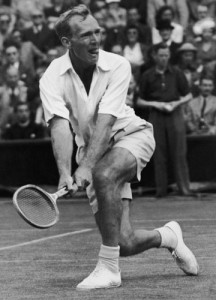Greatest Kings of the Court at Wimbledon 7
Since 1950, the lush lawns of Wimbledon have staged some of the greatest tennis matches of all time.
Many of those battles have been waged on Championship Sunday as two finalists faced off on opposite sides of the net to determine who would claim the vaunted title that year.
Throughout the decades the champions seemed to come in waves from Australia early on, then Sweden, the United States and lately from Switzerland, Spain and most recently from Serbia.
The twelve greatest champions of the past 60 years won multiple titles after working through the draw to reach the final at the All-England Club.
Until recently, most truly successful played serve and volley tennis—a game which seemed unbeatable on grass.
Now, however, base-liners rule Centre Court.
Base-line players supplanted serve and volleyers as the seemingly less aggressive game style dominated, enhanced by new racket technology while the grass surfaces reportedly slowed significantly.
As Wimbledon gets underway in 2012 world No. 1 Novak Djokovic hopes he will capture his second Wimbledon championship.
Rafael Nadal desperately wishes to seize his third title on the grass while Roger Federer anticipates winning the Wimbledon trophy for the seventh time and, in the process, recapture the No.1 ranking.
As usual, the Wimbledon championship is eagerly anticipated with much riding on the outcome.
See whose name is added or moved up on the Wimbledon winners list once the fortnight ends.







